Flower Power Revival?
How to Save Carpinteria's Cut Flower Industry
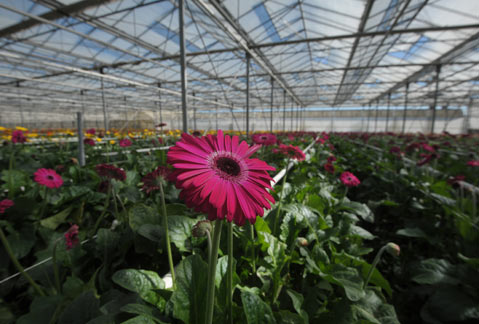
“This is basically the last stand for cut flower production in the United States,” says Kasey Cronquist, scanning the thigh-high stretch of lilies growing in a Carpinteria greenhouse. Over the last 20 years, he explained, half of the state’s cut flower farmers have gone out of business (from 500 down to 250), withered by an influx of cheap blooms imported from Colombia. Through government subsidies and overseas aid, the South American country cornered 75 percent of America’s cut flower market in that time and now threatens a total takeover.

Since four out of five American cut flowers are cultivated in California soil — with Carpinteria Valley as the country’s top growing area — the fate of the industry hinges upon this last bastion of productivity. To save it, Cronquist, CEO of the California Cut Flower Commission, worked alongside industry experts and lawmakers for three years to come up with a practical solution to inefficient shipping, which is what’s knocking growers out of the game. Currently, multiple carriers run hundreds of routes, and California nurseries haven’t ever been able to coordinate the volumes necessary to generate economical rates.
Headed by Representative Lois Capps, a bi-partisan Congressional group is lobbying hard to include a clause in the forthcoming Colombia Free Trade Agreement (FTA) that would authorize the Department of Agriculture to build a $15 million, 200,000-square-foot transportation depot in Oxnard. The hub would consolidate loads and trips, and drop shipping costs by as much as 30 to 40 percent. Capps, who represents 40 flower growers, the most of any congressmember, has drafted a number of letters to trade representatives over the years in support of the facility, recently bringing the issue to the attention of President Barack Obama and urging him to keep domestic nurseries in mind.
If the bid fails, there is no contingency plan, and America’s cut flower industry could die off in the next 20 years. But Cronquist and the farmers he represents remain optimistic that Republicans and Democrats will unanimously conclude $15 million is barely a drop in the budgetary bucket, well worth spending to buoy an area of commerce that funnels $5.5 million a day into California’s economy and supports over 10,000 jobs. “We’ve got a really good case,” said Cronquist.
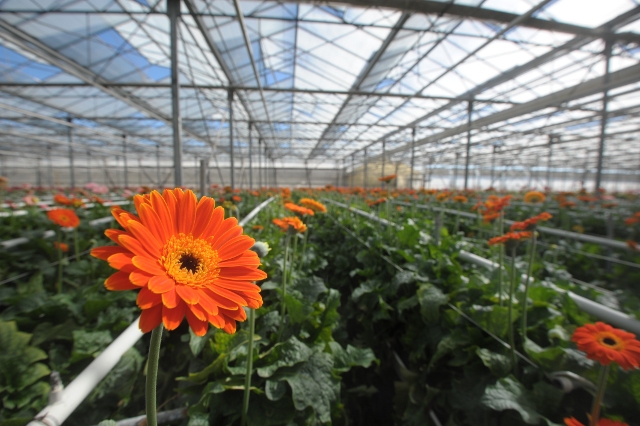
Fading Hue of Red, White, and Blue
Colombia’s movement into America’s cut flower market began in 1991 with the Andean Trade Preferences Act, which was designed to lessen the country’s dependence on the illegal drug trade by eliminating certain tariffs. The law, combined with cheap labor, little regulatory oversight, and the tens of millions of dollars Colombia’s government pumps into its flower industry annually — not to mention U.S. aid money for economic development and drug eradication — turned the country into a cut flower powerhouse.
Now an average of 10 plane-loads of product are flown from Bogota into Miami each day, trucked to centralized shipping centers there and in Los Angeles, then dispersed across the country, reaching the consumer within 72 to 96 hours. Though they often pay less for Colombian bouquets, customers get a diminished bang for their buck as the overseas journey takes a toll on flowers’ delicate petals and tissues, explained Todd Ingham of Farmer’s West. They experience extreme temperature swings — chilling in the upper atmosphere then baking on hot tarmacs — which can cut the flowers’ vase life in half compared to their American counterparts, depending on the variety.
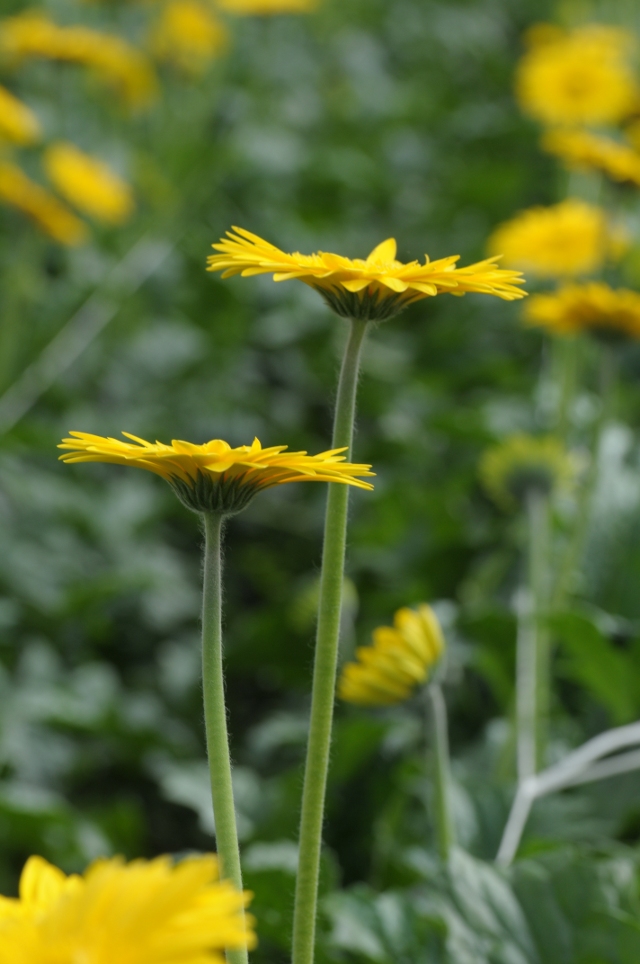
U.S. producers, by contrast, are able to deliver their flowers to wholesalers, grocery stores, and online retailers within 24 to 48 hours, Ingham said, his breath crystallizing in Farmer’s West’s large 36-degree freezer. They keep their products chilled throughout each step of the transport process, called a “cold chain,” which extends the flowers’ longevity. As soon as the flowers are clipped from their fields, they get treated with preservatives to maximize their water intake and are then moved into a cold truck before reaching a temperature-controlled warehouse and, eventually, the store.
Despite the disadvantages, Colombia’s cut flower farmers enjoy a lock on specific crops that used to be a source of pride for California producers. “The name of the game is avoiding growing what they’re growing,” said Ingham, noting that carnations, chrysanthemums, pompoms, and roses have all been pushed out of the state. “Effectively, every time we made those crops popular, we’d lose them.”
Most of the flowers that dot the Rose Parade’s floats, for instance, now come from Colombia, and last year, for the first time ever, the event named an official rose sponsor: Miami’s Passion Growers, which buys only from Colombian farmers. California still grows most of the lillies and gerber daisies sold in the country, but the Colombians are actively working on technology and cultivation techniques that would allow the varieties to better survive the plane trip, and potentially wipe their competition from the U.S. market.
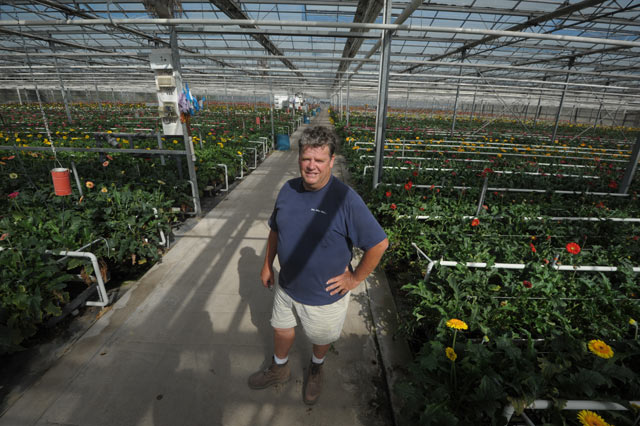
Petal to the Metal
A big piece of the problem puzzle, explained Ocean Breeze Nursery’s Rene Van Wingerden, is that consumers simply don’t know if they’re buying foreign-born flowers. If they did, studies show, they’d more often than not choose a domestic product, even if it’s slightly more expensive. At the moment, there’s no certification of origin requirement for cut flowers, but Van Wingerden and his colleagues are encouraging retailers to put “CA Grown” stickers on bouquets that come from the area. Many grocery store chains have jumped on board, reporting that CA bunches sell faster.
Van Wingerden pointed to a floral shop down the road to illustrate his point. The owner there simply couldn’t buy a California rose, as her wholesaler didn’t offer the U.S. product. She pushed and persisted, eventually convincing the seller to carry state roses. Customers too, he went on, should ask where their purchase comes from and lobby for a choice. “You have to demand it,” said Van Wingerden. He also talked of how area nurseries have worked to foster an appreciation for buying locally by opening their greenhouses to the public, letting customers peek at the operations and taking home a complimentary bulb or two.
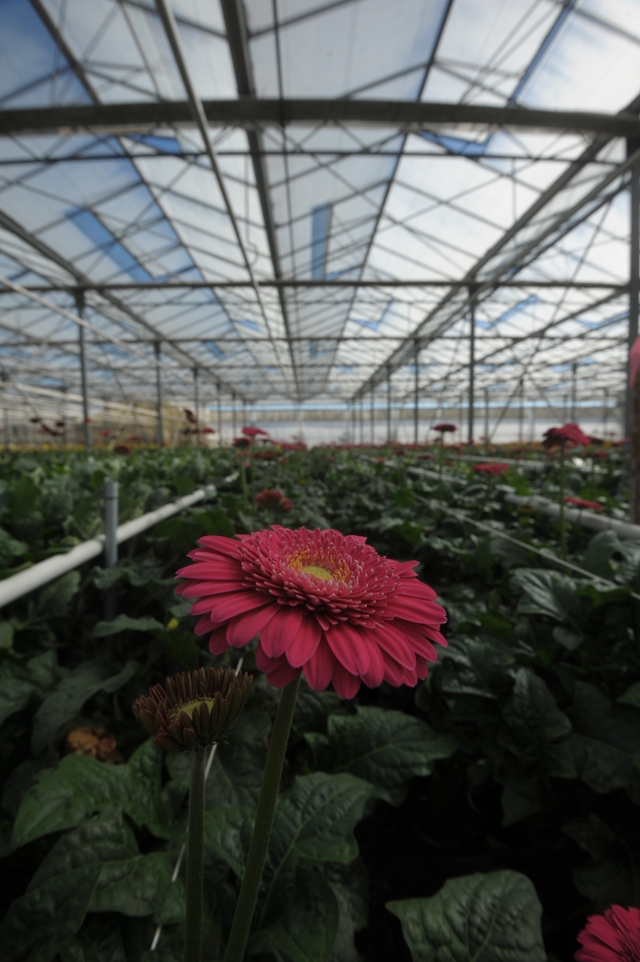
A big proponent of the suggested transportation model, Van Wingerden said companies need to put the competitive, every-man-for-himself mentality aside and work together in the common pursuit of survival. “Either we get good at what we do and organize properly,” he said, gently clasping a daisy around the petals to test if it was ready for harvest, “or we go out of business.” Some trucking companies are excited about the transport depot idea, he said, and others aren’t — but even the detractors are submitting proposals to be included.
California cut flower growers, Van Wingerden summed up, aren’t against a Colombia FTA, and they don’t want to see their southern rivals fail. They simply want a bit of the government support their counterparts enjoy. “We’re not asking for a handout or an unfair advantage,” he said, “just an even playing field so we can compete fairly.”


